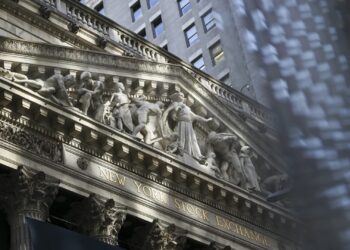
Hetty Green is remembered as the “world’s greatest miser” and the “Witch of Wall Street,” but these days, Green would likely be seen as an eccentric investing icon. After all, while she became famous for her frugal nature and gruff exterior, Green pioneered value investing strategies that have made billionaires out of many of today’s leading investors. And when the chips were down, when people really needed help, the whaling heiress turned independent investor, business tycoon, and world’s wealthiest woman often used her fortune to save the day.
There’s perhaps no better example of Green’s misunderstood legacy than the knickerbocker crisis. Also known as the panic of 1907, the knickerbocker crisis is now largely forgotten, but the economic nightmare was burned into the memories of those who lived around the turn of the 20th century. It had somewhat complex origins, but the long and short of it is this: Wall Street greed turned ugly, eventually leading to bank runs and a serious recession.
Over a three-week period after the panic began on Oct. 22, 1907, the New York Stock Exchange plummeted nearly 50% from its 1906 peak. And a year later, in 1908, Gross National Product (GNP), a measure akin to today’s Gross Domestic Product (GDP), cratered 12%. The problems for the banking system were so severe during the knickerbocker crisis that they spurred the establishment of the Federal Reserve System.
It all kicked off when a copper magnate, F. Augustus Heinze, and the “Ice King” (who literally sold ice), Charles Morse, tried to artificially inflate the stock price of United Copper, a practice that is now illegal. Heinze and Morse borrowed heavily to invest in United Copper and drive up the stock, but when the ploy didn’t work, they had to default on a number of large loans. This led to problems for a few key banks that typically didn’t hold much cash in reserves during that era, including the Knickerbocker Trust (hence the name of the crisis).
The issues for bank and trust companies eventually sparked a widespread panic with bank runs in many parts of the country. As the situation deteriorated, John Pierpont Morgan, the American financier who founded what is now JPMorgan Chase, was eventually forced to call together a group of Wall Street’s best and brightest at the Morgan Library to help decide how to prop up the ailing economy and stock market. Hetty Green was the only woman who was invited to attend that meeting during the height of the panic.
Why? Her status on Wall Street certainly helped, but she also predicted the whole thing.
An issue of The Literary Digest in 1916 details an earlier New York Tribune article that featured quotes from Green about how she forecast the panic of 1907—and then proceeded to bail out more than her fair share of investors, businesses, and even the city of New York.
“I saw this situation coming,” she said, noting that there were undeniable signs of stress. “Some of the solidest men of the Street came to me and wanted to unload all sorts of things, from palatial residences to automobiles.”
Green said that she then gave The New York Central Railroad company a “big loan” after they came knocking, and that made her “sit up and do some thinking.” She decided to begin gathering as much cash as possible, understanding that a panic could be on the way.
“When the crash came I had money, and I was one of the very few who really had it. The others had their ‘securities’ and their ‘values.’ I had the cash and they had to come to me,” she said.
Green described how men came to New York from all over the country to ask for loans during the panic of 1907. But despite being labeled a “miser” throughout her life, she didn’t take advantage of the situation.
“Those to whom I loaned money got it at 6%. I might just as easily have secured 40%,” she explained. “Never in my life—no matter what has been said against me—have I practiced usury, and no one knows it better than the wealthy men who have had business dealings with me.”
Usury, or charging excessive interest for a loan, was against Green’s moral code, which was born of her Quaker roots. And she seemed to relish in the idea that some of the world’s most powerful men, businesses, and even local governments came to her when they needed a bailout.
Green would go on to lend the government of New York City $1.1 million at the peak of the 1907 panic, which is equivalent to roughly $33 million in today’s dollars. And it wasn’t the first time she had offered her support, according to the 1930 book titled The Witch of Wall Street: Hetty Green. Months before the panic, she gave a $4.5 million loan to the city, worth nearly $150 million today.
“On more than one occasion, when New York was running low on money, she would lend money to the city,” explained Charles Slack, the author of Green’s biography, Hetty: The Genius and Madness of America’s First Female Tycoon. “And she always did so at reasonable rates. She didn’t gouge or hold the city over a barrel.”













